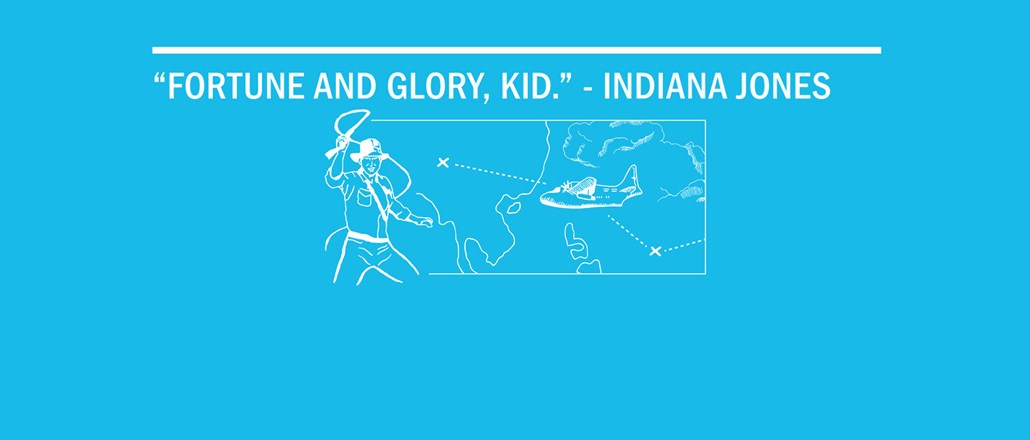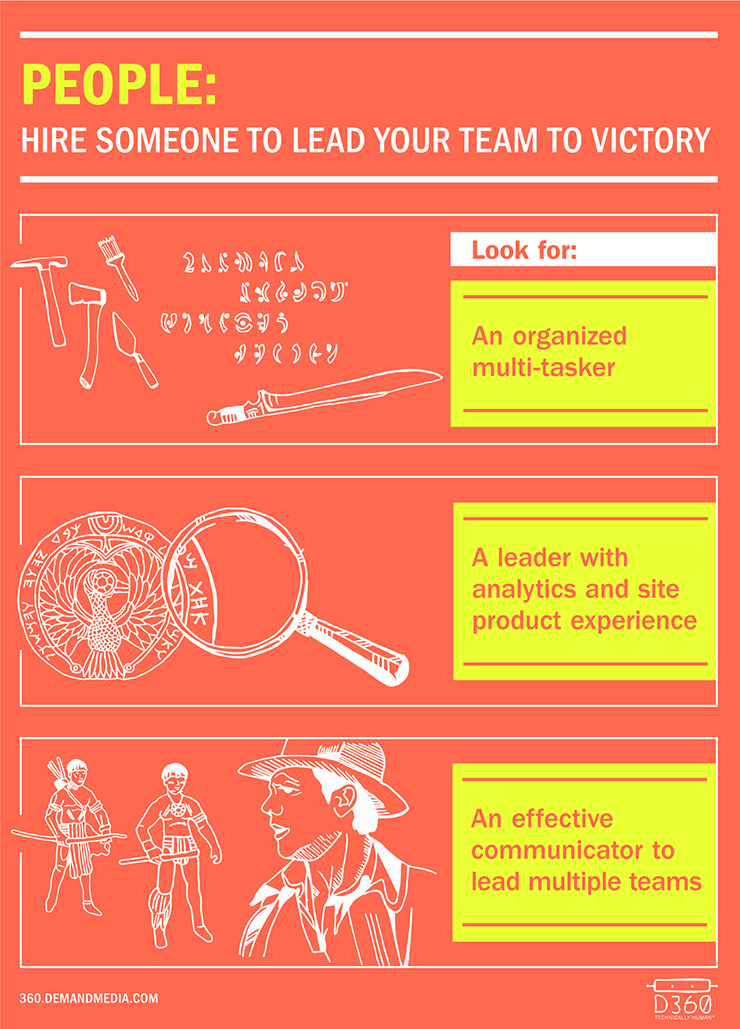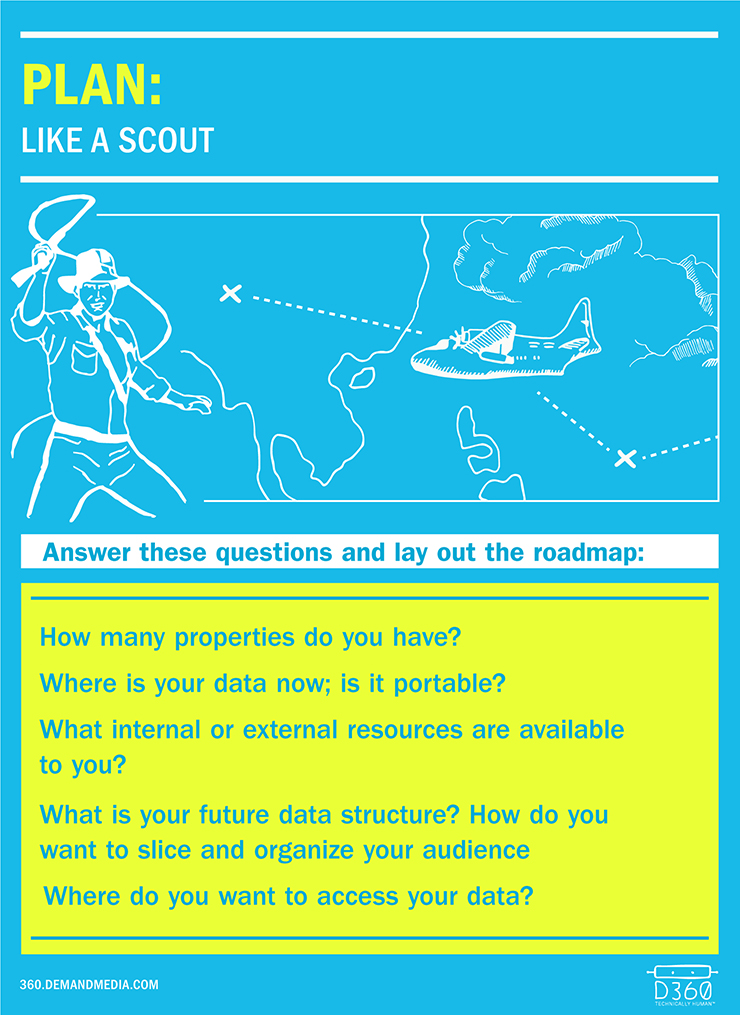
This column was authored by Scott Messer, Senior Director, Business Development at D360.
You remember the opening scene of Raiders of the Lost Ark? Indiana Jones deftly traverses a number of booby traps and expertly replaces the Golden Fertility Idol with a bag of sand. In this case, of course, “deftly” means leaving at least one guide dead in his wake and “expertly” means escaping the tomb with a 2-ton boulder at his back. This is what it’s like to migrate a DMP.
Migrations can be painful, debilitating and rife with pitfalls. But after four years with our original DMP, it was time to move on. Our products had grown, our data-sets had matured. Once we had vetted our selection—is it flexible for our growing needs, would our data be safe in practice, does it churn out relevant, actionable insights—we took our first, frightening step.
Luckily for you, our Data Management Platform (DMP) migration was a success. Now, we’re sharing what we learned in the hopes that you too can avoid operational booby traps and quell your fear of boulders, er change.
People: Choose wisely
Indy rarely picked the right people, be they treacherous sherpas or two-timing ice queens. We were determined to learn from our hero’s mistakes. Our super-organized senior audience manager had extensive analytics and site product experience, and had worked closely with adops, engineering and product teams. She helped us bridge knowledge gaps and advance the project.
Plan: Like a scout
Unlike Indy, we couldn’t make our swap using only a fragment of a map. Instead, we detailed every step. It was critical to our process and the key to success. We were fortunate to have about 9 months available for the transition, so we used 3 of those months to plan meticulously.
For operational efficiency, we then designed a process and formulated a checklist that was repeatable for each of our 20 sites and 7,000 individual segments. Keep reading to find out some of the steps we took.
The Golden Idol Swap
Like Indiana Jones we aimed to make a swap without anyone noticing.
To begin, we ran both DMPs simultaneously on each site for a minimum of two months. Watching for site speed issues, we allowed the 2nd DMP to ramp up for at least 30 days to acquire a fresh, full audience. If done properly, the audiences in each DMP should be exact mirrors of each other.
Secondly, we implemented a check and balance sanity system that compared segment populations in each DMP as well as forecasted impression volume against each DMP cookie set. If the numbers didn’t trend together, then they didn’t make sense and we investigated.
Further, we were able to use our international properties, like ehow.com.br, which did not have any active audience enabled ad campaigns, as a “low risk” practice opportunity. Between the sanity system and the less critical sites, we were able to smooth out the procedural kinks and get ready for transitioning livestrong.com and ehow.com.
At this point, the code had been up for at least two months, the data pools were nearly identical, and all systems were “go.” To complete the swap, we followed the steps below:
- Removed the first DMP’s code from the properties (all site pages, leave no stone unturned type of removal)
- Left the first DMP’s cookies active and accessible in Google Audience Manager, DFP, AdX
- Targeted both sets in DFP with an “or” statement for existing and soon to launch line items (our safety net system in case there were gaps in data)
- Observed cookies pools from the first DMP shrink daily until only new DMP cookies remained
- Performed sanity checks to confirm segment populations, impression volumes, and CTR were maintained and steady
- And finally, archived old segment names in Google Audience Manager
Cue the music, the Idol was ours.
More from Digiday

The AI hype cycle is rewriting ad tech’s M&A math
As talk of a dot-com-style AI bubble grows louder, buyers are shifting from growth-at-all-costs to consolidation and cleanup.

The accidental guardian: How Cloudflare’s Matthew Prince became publishing’s unexpected defender
Cloudflare’s day job is fending off botnets and nation-state cyberattacks, not debating how Google and other AI firms crawl publisher sites.

Omnicom Media kicks off CES with a Google search partner that drills deeper into intent
Omnicom is working with Google to create a new tool that empowers brands with far deeper insights into how to use search in the AI-powered era, given that historical notions of search marketing have flown out the window.








